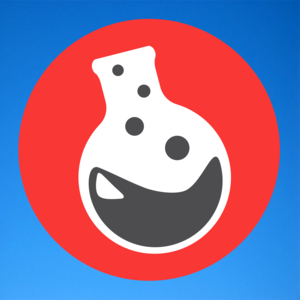12971970
Edexcel (9-1) Topic 6
Beschreibung
Keine Merkmale angegeben
Quiz von https:// revisechemistry.uk, aktualisiert more than 1 year ago
Mehr
Weniger

|
Erstellt von https:// revisechemistry.uk
vor mehr als 6 Jahre
|
|
Zusammenfassung der Ressource
Frage 1
Frage
Which of the following elements is a halogen?
Antworten
-
iodine
-
sodium
-
carbon
-
iron
Frage 2
Frage
Select all elements that are group 1 metals
Antworten
-
hydrogen
-
lithium
-
sodium
-
potassium
-
indium
-
gallium
-
helium
Frage 3
Frage
Group 1 of the periodic table are commonly known as [blank_start]Alkali Metals[blank_end]. They are found in the first column of the periodic table because they only have [blank_start]one[blank_end] electron on their outer-shell. They are soft, and have generally [blank_start]low[blank_end] melting points (for metals).
Antworten
-
Alkali Metals
-
one
-
low
Frage 4
Frage
chlorine + hydrogen → [blank_start]hydrogen chloride[blank_end]
bromine + sodium → [blank_start]sodium bromide[blank_end]
potassium + water → [blank_start]potassium hydroxide[blank_end] + hydrogen
Antworten
-
hydrogen chloride
-
sodium bromide
-
potassium hydroxide
Frage 5
Frage
[blank_start]Alkali metals[blank_end] become more reactive, the larger the atom. This means the [blank_start]metals[blank_end] near the top of the group (lithium, sodium etc) are much [blank_start]less[blank_end] reactive than those near the bottom of the group (rubidium, caesium etc). This is because the outer negative electron is [blank_start]further away[blank_end] from the positive nucleus, meaning it [blank_start]doesn't feel as much[blank_end] attractive force and so can be more easily lost.
Antworten
-
Alkali metals
-
Halogen elements
-
metals
-
elements
-
less
-
more
-
further away
-
closer
-
doesn't feel as much
-
feels a lot more
Frage 6
Frage
At room temperature:
Chlorine is a pale green [blank_start]gas[blank_end]
Bromine is a [blank_start]brown[blank_end] liquid
Iodine is a purple-black [blank_start]solid[blank_end]
Antworten
-
gas
-
brown
-
solid
Möchten Sie mit GoConqr kostenlos Ihre eigenen Quiz erstellen? eigenen Mehr erfahren.
